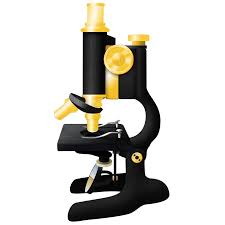
ImageJ
SEM study; Morphology Analyzer; Structure Analyzer
Description:
In modern research, image data is increasingly central to the analysis of physical, biological, and material systems. Whether it's scanning electron microscopy (SEM), optical microscopy, fluorescence imaging, or X-ray imaging, precise interpretation of images is essential for quantitative evaluation. ImageJ, an open-source image processing software developed by the National Institutes of Health (NIH), has become a standard tool in academic research due to its flexibility, extensibility, and powerful analytical capabilities.
ImageJ is written in Java and runs on Windows, macOS, and Linux, making it accessible and platform-independent. It supports a wide range of image formats and allows researchers to process, analyze, and quantify image data with high accuracy. Its plugin architecture and macro scripting support have fostered a large and active user community, constantly expanding its capabilities to serve the needs of life sciences, materials science, physics, medical imaging, and beyond.
Core Features and Analytical Capabilities
At its foundation, ImageJ is built to process multidimensional image data—2D, 3D stacks, and even time-lapse sequences. Some of its core functions include:
-
Image enhancement (contrast adjustment, noise filtering, sharpening, background subtraction)
-
Segmentation and thresholding (binary masks, region-of-interest analysis)
-
Measurement and quantification (area, perimeter, circularity, Feret diameter, intensity profiles)
-
Object counting and particle analysis
-
Image overlays and annotations
For materials science and nanotechnology applications, ImageJ is especially useful in analyzing SEM, TEM, and AFM images, where researchers can measure:
-
Particle size distribution
-
Grain boundary statistics
-
Porosity and pore size
-
Surface roughness
-
Crack length or defect density
By calibrating pixel dimensions to real-world units (e.g., µm, nm), researchers can convert qualitative micrographs into rich quantitative datasets suitable for statistical analysis and publication.
Advanced Applications and Plugin Support
ImageJ is not limited to basic image analysis—it is highly customizable through macros, scripts, and plugins. Thousands of plugins are available through repositories like Fiji (a distribution of ImageJ bundled with scientific plugins), including:
-
3D Viewer and Volume Rendering: For analyzing tomography or confocal Z-stacks.
-
BoneJ: For morphological analysis of porous or trabecular materials.
-
TrackMate: For tracking particles, cells, or defects in time-lapse image sequences.
-
Bio-Formats: For importing proprietary microscope formats from major instrument vendors (e.g., Zeiss, Olympus, Nikon).
For researchers in nanomaterials, composite materials, or electrochemical devices, ImageJ can help quantify structural features observed in microscopy images, correlate morphology with performance metrics, or automate repetitive analysis tasks through scripting.
Integration and Scripting
One of the most powerful aspects of ImageJ is its support for macro scripting and Java-based plugins, which allow researchers to automate workflows, create custom tools, and process large batches of images. ImageJ also supports scripting in Python (via PyImageJ), JavaScript, and Beanshell, allowing integration with data analysis environments like MATLAB, Python, or R.
Common examples include:
-
Automating measurement of 500+ particles across multiple SEM images
-
Time-lapse tracking of cell migration or nanoparticle diffusion
-
Generating histograms, scatter plots, or time curves from extracted measurements
This programmability makes ImageJ suitable for high-throughput experiments and reproducible scientific analysis.
Research and Educational Benefits
ImageJ is widely cited in scientific publications and recommended by journals for image processing transparency. Its benefits for researchers include:
-
Free and open-source: No license fees, accessible to all institutions
-
Cross-platform compatibility
-
Broad format support (TIFF, JPEG, PNG, BMP, RAW, DICOM, etc.)
-
Reproducibility: Macros and plugins ensure consistent image processing
-
Educational value: Used in undergraduate and graduate courses to teach image analysis concepts
Researchers can also generate publication-quality figures by adjusting resolution, labeling images with scale bars and annotations, and exporting high-quality image stacks or animations.
Conclusion
ImageJ is a powerful, open-source platform that empowers researchers to turn complex image data into quantifiable insights. Whether analyzing nanostructures, biological cells, or material defects, ImageJ provides a flexible, extensible, and efficient environment for scientific image processing. Its ability to adapt to virtually any imaging modality and research field makes it an essential tool for both new and experienced scientists in today’s data-driven world.